A well-organized website structure eases the user navigation on the website, thus luring them to choose your business website ahead of competitors. With the increasing number of websites in the digital marketing world, improving your website ranking on the SERPs is easier said than done. Although there are many points to focus on this in regard and one of them is SEO pagination. The more organized your website structure is, the easier it is for users to reach the desired page they are looking for on the website. In this blog, let us see what pagination is in SEO and how this on-page SEO technique helps to improve traffic on the website, conversion rate and much more.
In your search engine optimization strategy, you must consider this pagination technique that works on dividing the page into numbers like page1, page 2 and so on. You must have seen in newspapers that the pages are divided into different sections. A quick guide for the same is provided on the first page so that the users can reach the desired page number. When you focus on content marketing, email marketing, etc., you focus on wiring great content that bets suit the buyer persona so that they take the intended action and move down the marketing funnel on the website. Pagination describes content distribution on different URL paths where the users can scroll to previous and next URLs. However, you should focus on the fact that there is no duplicate content to avoid lowering of your website ranking and search engine penalties. Some critical website types where paginated pages are essential are:
• Blog websites.
• Websites that deal with extensive data.
• E-commerce websites as they have a large category of products.
• Product directories.
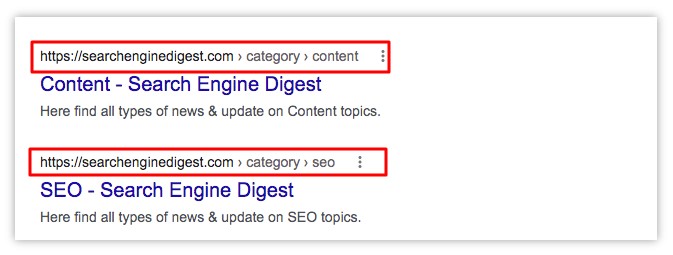
What is pagination in SEO?
SEO pagination is the process of dividing the website content across a series of pages. It is a commonly used technique by businesses so that the page loading speed improves despite the huge amount of data present on the website. Pagination is a great way to structure website content into different pages to find the desired page easily. You need to determine the important pages on your website and then optimize them. Pagination is dividing the content into different page numbers. This helps to increase the user engagement rate on the website. It helps the visitors to your website reach the desired page number in quick time so that they have optimal time to spend on the desired content and take the intended action.
Pagination and SEO are essential for all-size businesses. As there are myths regarding PPC advertising that ad campaigns cannot achieve better results with a lower advertising budget, but with a proper bidding strategy, you can achieve the desired results. Similarly, there are myths regarding SEO advertising that pagination is not so crucial in a website and is often overlooked. But, this is not good as not many users prefer continuous website scrolling. They prefer to reach the desired page quickly. So, to target these impatient users, you need to divide the page into different page numbers to achieve the desired marketing goals like lead generation, form fill up, building brand awareness and ultimately improving the conversions rate.
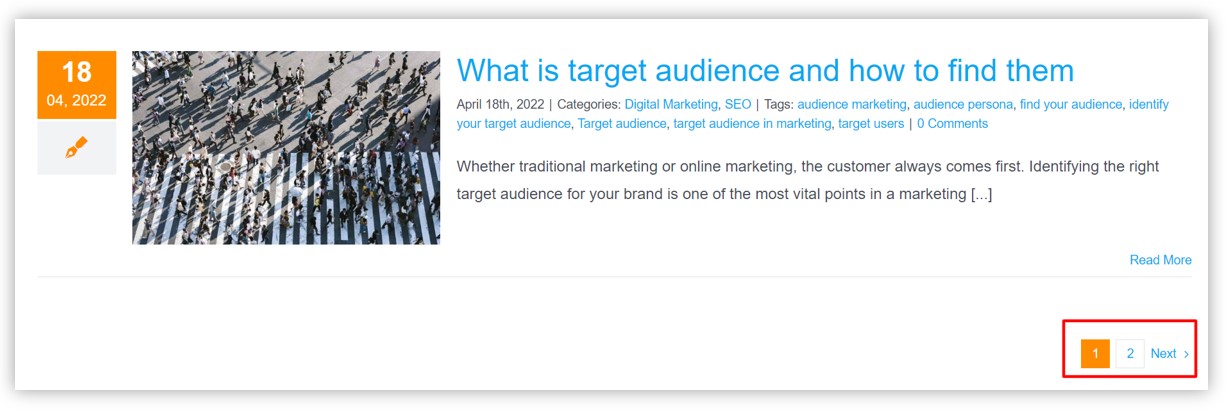
SEO best practices for pagination
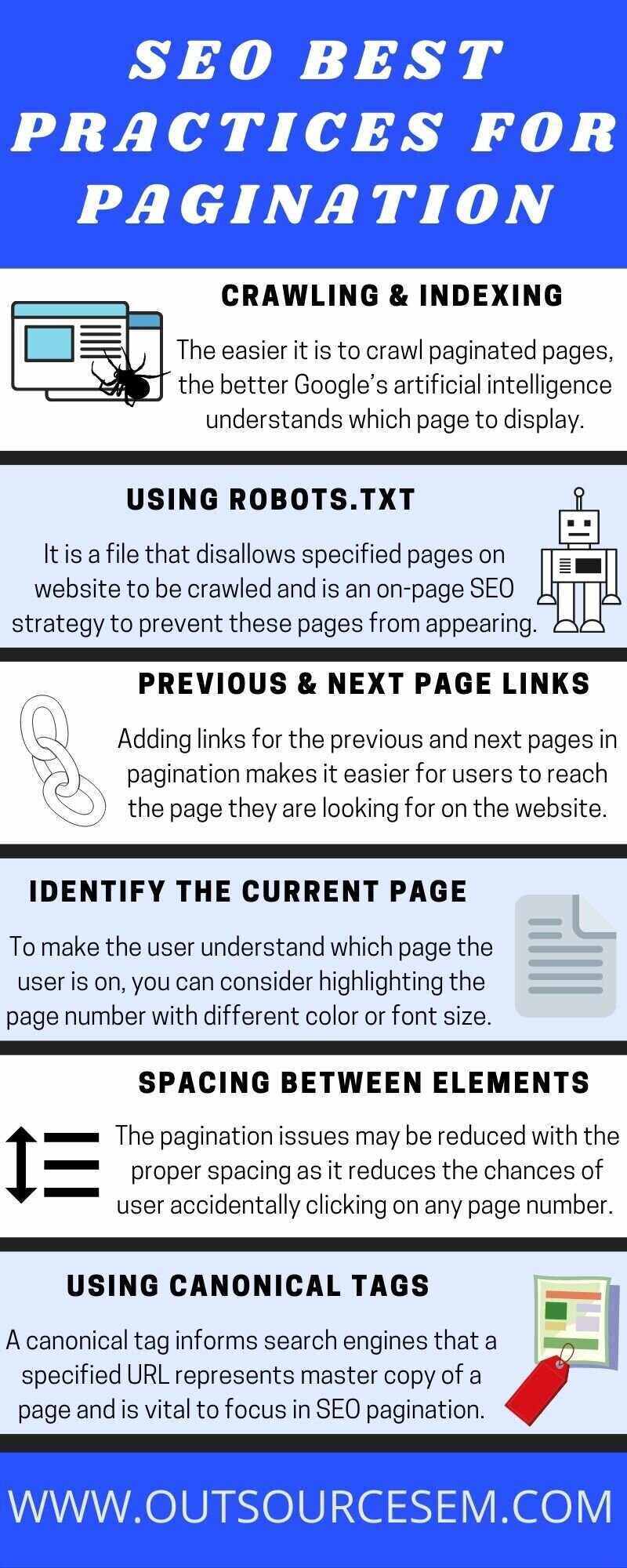
1. Proper crawling and indexing - One of the crucial points to focus on in SEO pagination is that the search engines should easily crawl the paginated pages. For search engines to be easily able to crawl and index the paginated pages, they must access them first. You need to ensure that your site links to the paginated pages that have crawlable links. The easier it is to crawl the paginated pages, the better Google’s artificial intelligence understands which page to show the user for the keywords or search terms entered.
In on-page SEO, as you focus on using descriptive URLs, optimizing title tags, implementing structured data, optimizing header tags, conducting keyword research, etc., to improve the performance of the SEO campaign, similarly in SEO pagination, you need to focus on crawling and indexing. Crawling is the discovery of pages that helps search engines load more pages easily and figure out which pages to show for the search query. Indexing helps store and organize the content, making it easier for search engines to store the information when the crawling process is done. Some points to focus on in crawling and indexing in SEO best practices are discussed below.
A. Use of sitemaps.
B. Optimizing images on the website.
C. Defining appropriate URL path for specified pages.

2. Using robots.txt - Another point to focus on in SEO pagination is using the robots.txt file. As pagination and SEO are crucial to get an increased number of impressions share, better click-through rate, etc., you need to prevent some of the pages from being shown to the target audience. Solving the pagination issues is crucial as it helps to improve the website ranking on the SERP. This informs the search engine to crawl different web page sections easily. You must have focused on including SEO best practices in your SEO plan & strategy to make the most of your SEO campaign with Google SEO and Bing SEO. Similarly, to reduce the pagination issues and exclude the crucial paginated content, you must use robots.txt.
Most websites focus on including page numbers with the paginated URLs. This helps the users easily reach the web page they are looking for. Robots.txt is a file that disallows the specified pages on the website to be crawled. It is an on-page SEO strategy to prevent the desired pages from appearing to the relevant audience and avoid irrelevant clicks. Disallowing the paginated content means that its content will not be displayed to the Googlebot.
A robots.txt is just a text file with no HTML markup code and is hosted on the webserver like any other file. In SEO pagination, it can be typically viewed by typing the full URL path for the homepage and then adding ‘/robots.txt’. In SEO pagination, a web crawler will follow the most specific set of instructions. You must ensure that all subdomains have their own robots.txt file. Some of the common terms that you come across in robots.txt are mentioned below.
a. User-agent - It is the specific web crawler to which you are giving crawl instructions.
b. Disallow - It is a command which informs the user-agent not to crawl a particular URL. In website pagination, only one ‘disallow line is allowed for each URL.
c. Allow - It is a command which informs the user-agent not to crawl a particular URL. In website pagination, only one ‘disallow' line is allowed for each URL.
d. Crawl delay - SEO pagination informs how many seconds a crawler should wait before loading and crawling page content. However, Googlebot does not acknowledge this command, but the crawl data's SEO report can be prepared for this using the Google Search Console.
e. Sitemap - In website pagination, this is used to call out the location of any XML sitemap or sitemaps associated with this page URL.

3. Provide previous and next page links - Another crucial point to focus on in SEO pagination is providing links to the previous and next pages. Businesses that have a huge number of visitors reaching the website wish to segregate the content on the website in various sections and subsections. Whether it is their products or services, blog pages, etc., all are divided into particular tabs on the home screen or have links attached on the page to reach the desired page. Adding links for the previous and next pages makes it easier for users to reach the page they are looking for.
You must have seen that e-commerce websites have various pages listed on their website. There are marketing trends that keep evolving with the PPC trends,SEO trends, e-commerce trends, etc. So, e-commerce industries need to update their website content accordingly to make the target audience move down the sales funnel. For any digital advertiser, it is vital to keep their website content updated with the products or services that users are searching for the most on search engines. This may lead to creating a long list of pages on the website. So, to make the users reach the desired page, you must consider adding previous and next page links.
To improve their website ranking on the SERPs and ease user navigation on the website, you should prefer dividing the webpage into different sections. And to even make the user directly reach the desired page and reduce any pagination issue, you must consider adding links to the previous and next pages. This helps the user quickly move to the next page after they have visited the desired page. Some points that you need to consider when adding links to the previous and next tabs on the page are listed below.
a. Ensure that no duplicate links are present.
b. The pages are correctly numbered.
c. Use a relevant display URL path that signifies the page where the link is being redirected.
d. Add short page descriptions in the link added.
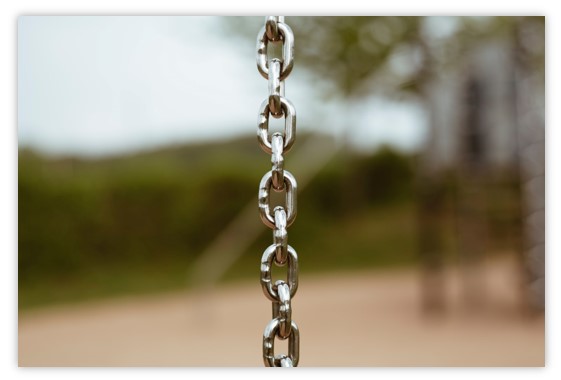
4. Identify the current page - In your SEO pagination strategy, another point that you need to focus on is to identify the current page. To ease the user navigation, you should inform the user about the page they are present on. Informing the users about the current page number would increase the user's trust in your website. It helps the user analyze what sections and subsections they are on and what they need to do to reach a particular page.
SEO best practices focus on reducing the marketers' efforts and easing the users' navigation on the website to take the intended action. To make the user understand which page the user is on, you can consider highlighting the page number. You can use different page colors or stylish icons that clearly indicate the page number even when the user changes the page number.
As you prepare an SEO report to identify the performance of various SEO metrics like the click-through rate, the number of impressions, page loading speed, average session duration, etc. and then work on an SEO plan & strategy to optimize them. In the same way, you need to clearly indicate the current position of the page that the user is on. If you find users on website switching pages with a significant timing difference, then showing the current position would prevent the user from getting lost in the void. They also do not have to press the previous or next button tab every time. Some points that you can focus on while displaying the current page number are discussed below.
a. Highlight the current page number with different colors.
b. Keep the page number fixed at a position highlighting 4 of 20, 5 of 20, etc.
c. Consider including boxes to navigate to the specified page number.

5. Enough spacing between elements - Another point that you need to focus on in SEO pagination is having enough spacing between the elements. Having relevant space between the elements is crucial as it helps the user clearly identify the page number. In website pagination, the more visible the element on the page is, the better are the chances of the user to stay engaged with your website in the long run.
The pagination issues may be reduced with the proper spacing between elements as it reduces the chances of the user accidentally clicking on any random page number. Suppose the user wants to click on page 5, but due to the smaller element size, page 6 gets clicked. This would reduce the users’ interest as they feel frustrated that the company does not provide the relevant spaces between different page numbers.
As you focus on utilizing the ad space in the PPC campaign, you can write great product page descriptions and make the user take the intended action with an excellent post-click landing page. It is an important point to focus on in on-page SEO to enhance user experience. An element that is too small may not be clearly visible to the target audience. If an element is too large, it may appear to take up extra space. You can perform a/b testing to identify which size drives more traffic to the website. With the launch of mobile-first indexing, you also need to consider that your page number elements are optimized for mobile devices as you optimize your website for mobile devices.
6. Using canonical tags - The crucial point that you need to focus on in SEO pagination is using the canonical tags. The canonical tags inform the search engines that a particular page's content is not duplicated to the other page. Often, businesses dealing in the e-commerce sector, news sector, etc., have some part of a page getting repeated on multiple pages. These duplicate content may be in the form of a call-to-action, some keywords or phrases in the meta description, etc.
A canonical tag informs the search engines that a specified URL represents the master copy of a page. You may have multiple internal links to a page and the search engine redirects to the specified page when a click on the link is made. When you have a proper linking done and the canonical tags are correctly added, the search engine has prior information that the content on the website is not duplicated.
In PPC advertising, as you focus on writing great content for ad description, ad headlines, ad copies, etc., similarly, these canonical tags help highlight your efforts that the content you have written on multiple pages is unique. To solve the pagination issues that can lower the website ranking on the SERPs, affect the number of clicks that your website receives, etc., canonical tags help be of great help. Whether it is Google SEO or Bing SEO, having canonical tags added for the relevant pages on your website prevents your website from getting penalized. Some points to focus on in canonical tags are mentioned below.
a. Canonicalize from HTTP to HTTPS to be in sync with SSL certificate.
b. Canonicalize domains if 301s and 302 redirect do not work correctly.
c. Canonicalize mobile pages to desktop.

Advantages of pagination
A. Increases page loading speed - SEO pagination helps to reduce the page loading speed. When the size of the website increases and the chunk of data grows, it takes a long time for the website to load. The more quickly the website loads, the higher are the chances that the user would move ahead.
In the era of online marketing, unlike traditional marketing, where the users spend most of their leisure time on online platforms, you need to have a better page loading speed. This is the era where you have the most impatient users, as nearly 53% of website visitors leave a website that takes more than 3 seconds to load. So, you need to have pages that load quickly so that the users do not have to wait longer. With marketers now using social media marketing to get in touch with the relevant audience 24/7, you need to have a better page loading speed. You can work on audience segmentation, demographic targeting, etc. and then implement the same in your pagination and SEO strategy to achieve the desired return on investment.
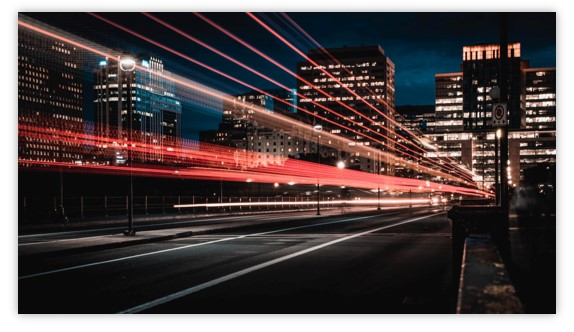
B. Eases user navigation - Another advantage of pagination and SEO is that it eases user navigation on the website. The users come to your website from various online platforms and have a different experience on website navigation. They may have come to your website where the subsections were divided even and adequately where all the content on the website was loaded on the same page.
You prepare an attribution report to determine where your website traffic comes from. In pagination and SEO, you need to make the users feel comfortable by dividing the web page into different sections. You can even subcategorize the page into various sections. This can easily be seen with e-commerce PPC, news websites, sports websites, etc. With a technical SEO audit, you can determine the average session duration that the users spend after navigating through different sections on the website. The more time that the users spend on the website, the higher are the chances of the user taking the intended action.
C. Boosts user engagement rate - Another advantage of SEO pagination is that it increases the user engagement rate. Be it any form of digital marketing like PPC ads, search engine marketing, etc., the prime focus for any digital marketer is to increase the user engagement rate. When working on strategic marketing like email marketing, content marketing, PPC plan & strategy, SEO plan & strategy, etc., the crucial point to focus on is to lure visitors to your website. The more number of impressions that you have, the better are the chances that the user would click on your website. With an increased click-through rate, you need to optimize images on the website, include short-engaging videos, etc., so that the user's interest is engaged. You need to increase the users’ trust so that the user chooses your website for every relevant search query ahead of your competitors. This helps in lowering the number of users leaving your website giving a better ranking on the SERPs and much more.
Closing thoughts
The SEO best practices include focusing on multiple crucial processes to increase the traffic on the website. When working on these essential SEO metrics, you need to determine that the search engine is easily able to crawl and index the website pages so that it displays the appropriate pages for the search terms or keywords entered. In pagination and SEO, the length of your website influences the user engagement rate, which affects the bounce rate, session duration, etc.
It can easily be understood that if a page is too long, the chances of the visitor staying on the website reduces, which ultimately leads to lowering of the website ranking, decreased number of users on the website, etc. So, to solve these pagination issues, you need to divide your website into different sections and add separate pages for each section. Although pagination solves the website ranking issues, but if it is not appropriately implemented, it may harm your SEO efforts. With the importance of SEO pagination discussed above, you get to improve your on-page SEO and also improve off-page SEO. If you find implementing the SEO pagination process troublesome, you can get in touch with a digital marketing company with expertise in local SEO, guest posting, SEO analytics, video SEO, etc. and see the improvement in website ranking, users spending more time on page, etc. which ultimately leads to increasing online sales. OutsourceSEM offers comprehensive SEO solutions for different businesses, including the home services industry. Our SEO specialists excel at driving organic traffic and improving search engine rankings for electrician SEO, flooring SEO, roofing SEO, lawyer SEO and small business SEO services. We create tailored SEO strategies, execute them flawlessly, and provide transparent reporting to ensure your business stands out online. Our goal is to boost your online visibility and generate sustainable growth.
References
• Pagination: Best practices for SEO & user experience
• SEO-friendly pagination: A complete best practices guide
